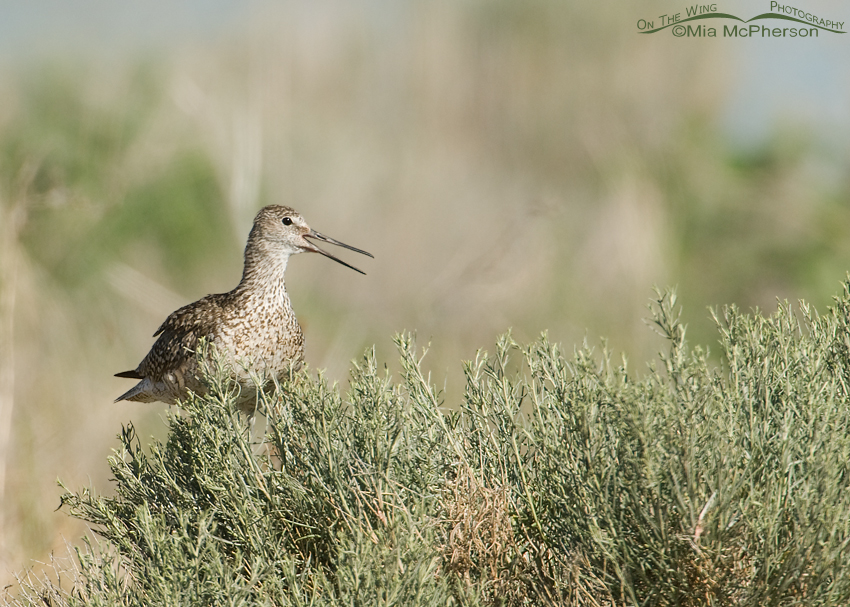 Alarmed adult Willet calling – Nikon D200, f7.1, 1/750, ISO 400, Nikkor 200-400mm VR with 1.4x TC at 400mm, natural light
Alarmed adult Willet calling – Nikon D200, f7.1, 1/750, ISO 400, Nikkor 200-400mm VR with 1.4x TC at 400mm, natural light
Being a bird photographer has allowed me many opportunities not only to photograph the subjects but to observe and learn from their behaviors. Yesterday I observed an adult Willet defending its young from a group of Black-billed Magpies that were near the Willet’s chicks.
Willets on Antelope Island State Park nest in prairie grasses and near sagebrush. After the chicks hatch Willets are most often seen with their young in the tall grasses as the juveniles learn to forage for their food. I find it especially challenging to obtain clear shots of the young Willets because the grasses seem to hide them very well. At some point in the season I stop seeing the Willets and their young on the high ground of the island and begin to only see them near the water. In my observations the adults appear to move the chicks closer to the shore of the Great Salt Lake as they mature towards being able to fly.
I’ve also noticed that when the adult Willets are keeping an eye on their chicks that they seem to prefer to perch on something higher than the grasses such as rock, boulders or as shown above on shrubs. So yesterday when I spotted this calling, alarmed adult Willet perched high up this shrub I suspected that there might be juvenile Willets close by because of my earlier observations.
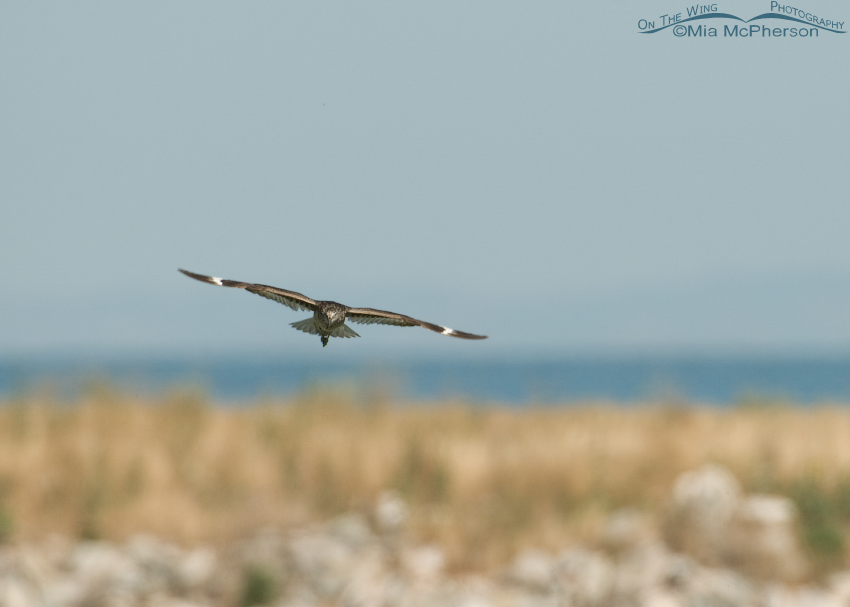 Willet in flight after flying towards Black-billed Magpies – Nikon d200, f7.1, 1/1250, ISO 400, +1.0 EV, Nikkor 200-400mm VR with 1.4x TC at 400mm, natural light
Willet in flight after flying towards Black-billed Magpies – Nikon d200, f7.1, 1/1250, ISO 400, +1.0 EV, Nikkor 200-400mm VR with 1.4x TC at 400mm, natural light
While I photographed the adult Willet it would often take flight from its perch, fly close the Black-billed Magpies I could see on the shoreline and a man made nesting platform and then fly back to perch high on a shrub. This bird did land on one other shrub and some rocks near the shoreline but most of the time it seemed to prefer the shrub in the image at the top which made it easier for me to anticipate landing shots and get ready for them by pre-focusing on the shrub.
I had not seen the chicks at this point but eventually saw three of the juvenile Willets between the vegetation where the adult could have seen them.
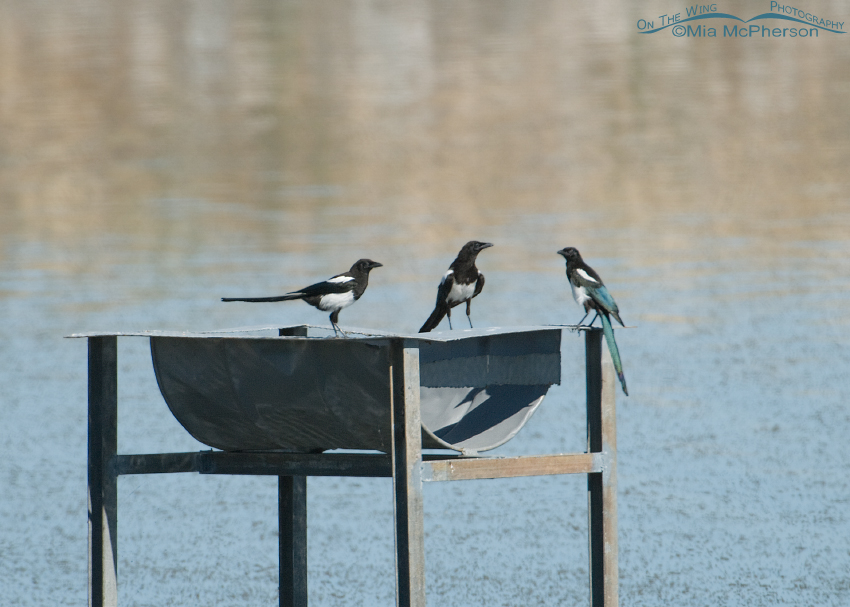 Black-billed Magpies near Willet young – Nikon D200, f6.3, 1/1250, ISO 400, +0.7 EV, Nikkor 200-400mm with 1.4x TC at 400mm, natural light
Black-billed Magpies near Willet young – Nikon D200, f6.3, 1/1250, ISO 400, +0.7 EV, Nikkor 200-400mm with 1.4x TC at 400mm, natural light
Black-billed Magpies do predate the nests of Willets for the eggs. I am not certain that they will take the juvenile birds, especially in this case because I could see that the juvenile Willets were nearly the same size of the adult but I believe that the adult Willet likely sees them as predators even in this stage of the young Willets development. Only one adult Willet was present while I photographed the interactions yesterday so I would not call the Willet’s behavior “mobbing” but it certainly was on the defensive.
Earlier this year while the birds were still incubating I saw Willet’s “mobbing”, one bird sounded an alarm call and several other Willets flew in and were dive bombing near some sagebrush on a hillside. It took me awhile but I finally spotted the predator that was causing all the activity, a full grown Badger. Even I wouldn’t want to mess with it.
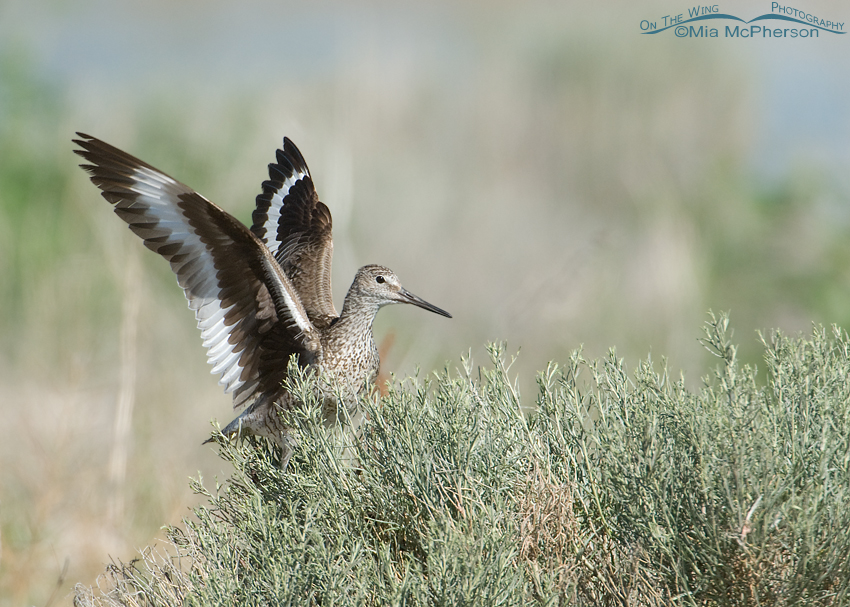 Adult Willet with wings raised – Nikon D200, 1/1000, ISO 400, +1.0 EV, Nikkor 200-400mm VR with 1.4x TC at 400mm, natural light
Adult Willet with wings raised – Nikon D200, 1/1000, ISO 400, +1.0 EV, Nikkor 200-400mm VR with 1.4x TC at 400mm, natural light
I have heard that there are those who think of Willet’s as drab, brown shorebirds. I don’t think that way myself, to me they are anything but drab especially when they lift their wings and show the striking patterns of white in their wings. I have watched Willet’s lift their wings like the bird above when fighting over their territory, during mating displays and when alarmed about their young.
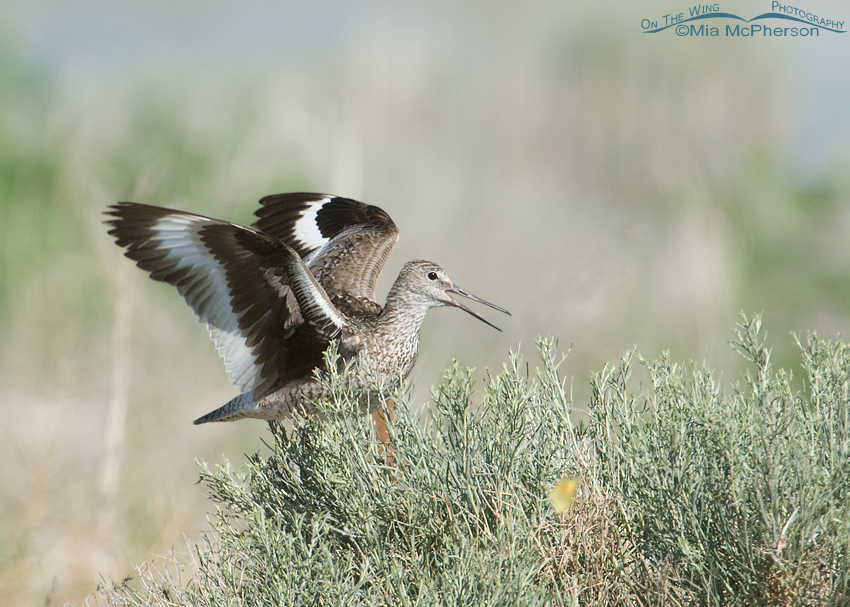 Landing adult Willet – Nikon D200, f6.3, 1/1000, ISO 400, +1.0 EV, Nikkor 200-400mm VR with 1.4x TC at 400mm, natural light
Landing adult Willet – Nikon D200, f6.3, 1/1000, ISO 400, +1.0 EV, Nikkor 200-400mm VR with 1.4x TC at 400mm, natural light
This adult Willet must have made more than a dozen flights towards the Black-billed Magpies yesterday and almost the entire time it was calling, both on the perch and in the air. As it came in for landings it would hold its wings high for several seconds which allowed me to take several frames each time that show the bold patterns found there.
By the way; the bit of yellow and to the right of the bird is actually an out of focus butterfly, I sure wish I would have had enough depth of field to get it in focus too.
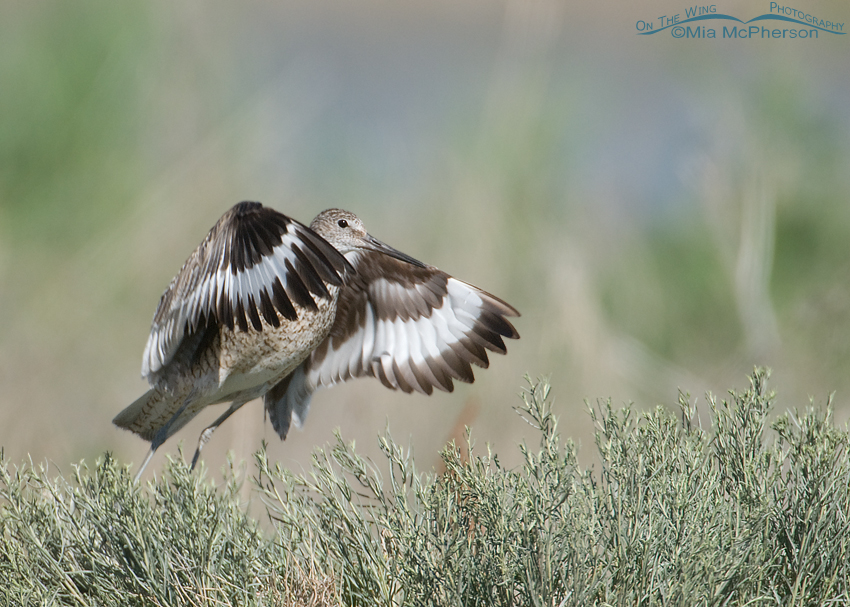 Willet lift off – Nikon D200, f6.3, 1/1250, ISO 400, +0.7 EV, Nikkor 200-400mm VR with 1.4x TC at 400mm, natural light
Willet lift off – Nikon D200, f6.3, 1/1250, ISO 400, +0.7 EV, Nikkor 200-400mm VR with 1.4x TC at 400mm, natural light
The sun was getting high, the light contrasty, the temperature was rising and my hunger was beginning to make itself known so I left the Willet to continue protecting its young.
A very interesting and educational morning on Antelope Island. Yet again.
Life is good.
Mia
Click here to see more of my Willet photos plus facts and information about this species.
Personally I find that it is not enough to know what species of bird I am photographing, I also want to know as much about their habitat preferences and behaviors as possible. I do that by observing the birds in the field and by using on line sites such as Birds of North America, also known as BNA (a pay site) to research the species.
Additionally; I learn from the bird guide books in my library. “The Sibley Guide to Birds” is usually the first one I pick up followed closely by the American Museum of Natural History’s “Birds of North America”. Another one that I use often is “The Birder’s Handbook”, it does not have the best of images or illustrations but it provides more information about the species I am looking up so that in combination with my other books I feel it gives me a well informed idea about the subject species. I firmly believe that the more I know about the birds the better my chances are for finding the birds and photographing interesting behavior and action.


You have illustrated your observations very nicely with these images. I too, like to know as much as possible about habitat and behavior, and feel that time spent in the field is so rewarding in that regard.